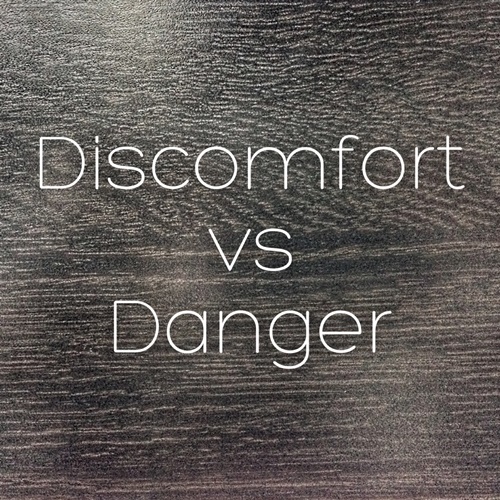
One of the greatest lessons I’ve learned from yoga is the inherent difference between discomfort and danger.
To the untrained eye, the stress response in our nervous system for each may initially be seen or experienced as the same. The true difference lies in that one is life-threatening and the other is generally a false alarm.
When we receive a stress response in our body, it can trigger the Sympathetic Nervous System (a.k.a. the Fight, Flight or Freeze response). This nervous system reflex is most healthy when you’re in immediate danger and need to survive the circumstance (i.e. being chased by a Sabertooth Tiger).
The problem with this is that we often experience this reflex when any stress is present, which may tax our bodies and minds unnecessarily. In the latter circumstance, we aren’t in danger; we’re just uncomfortable. Yoga can teach us to change our autonomic response to stress and to discern when which response is appropriate.
We generally experience this paradox when we find ourselves in a yoga posture that is uncomfortable. Let’s take Frog Pose, for example. Despite all of the yoga I’ve done over the past decade, my hips are a place of tightness and, well, discomfort. So when I’m practicing the deep hip opener that is Frog Pose, the real work exists more in keeping my mental state in check than the physical aspect of being in the pose.
When I first started practicing this posture regularly, my immediate nervous system impulse upon entering it would be to run. It was as if my nervous system was telling my mind “oh no, don’t do that! It’s dangerous!” The reality is that it was just uncomfortable.
I had the good grace of having fabulous teachers who knew exactly what I was going through. When I found myself in that mindset, I would be instructed to “breathe through it” or “allow the tension to melt away.”
And you know what? Breathing through it and allowing the tension to melt away actually worked. With enough practice and patience, I was able to change my relationship to the pose and the discomfort it presented. Essentially I learned to cultivate comfort in discomfort; to discern the difference between discomfort and danger.
The greatest part of this understanding is that I was able to take it out into my life (#yogaoffthemat). When I am working and feeling stressed, I ask myself “is this a threat to my life?” 99.9% of the time, it’s not. It is, again, just discomfort. So I take a deep breath, allow the intensity to melt away and I’m left with a calmer mind and body. I’m still uncomfortable, but my relationship to discomfort is now different and it is no longer taxing my nervous system. In these situations, I also have a clearer mind and am able to resolve the discomfort more quickly.
What I’ve essentially learned is that discomfort is not something we need to turn away from. It is in facing discomfort that we can learn and grow. It can rub us the wrong way for all the right reasons, leaving us stronger, healthier and ultimately happier.
Because of this, I encourage the practice of changing our relationship with discomfort. I encourage us not to run, but to remain curious and present with the experience instead.
~
Relephant Read:
How to Start a Home Yoga Practice.
~
Author: Jerry Givens
Editor: Alli Sarazen
Photo: Author’s Own










Read 1 comment and reply